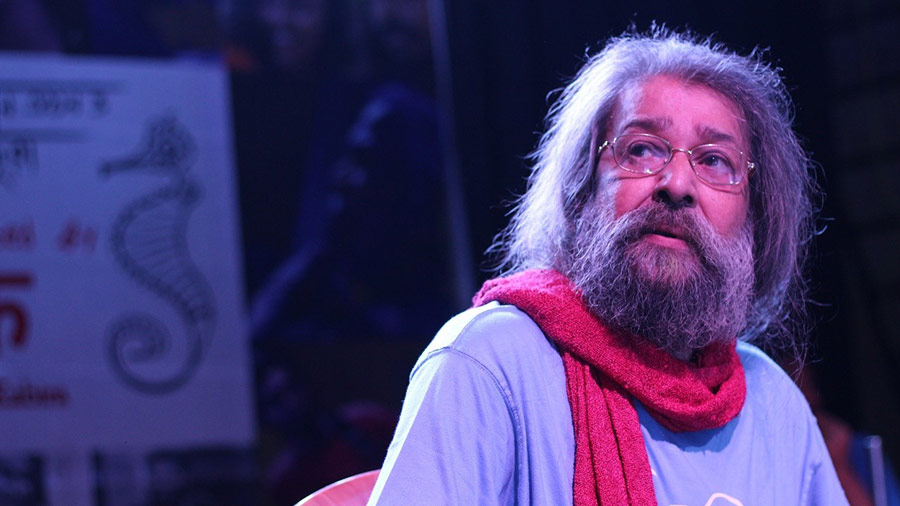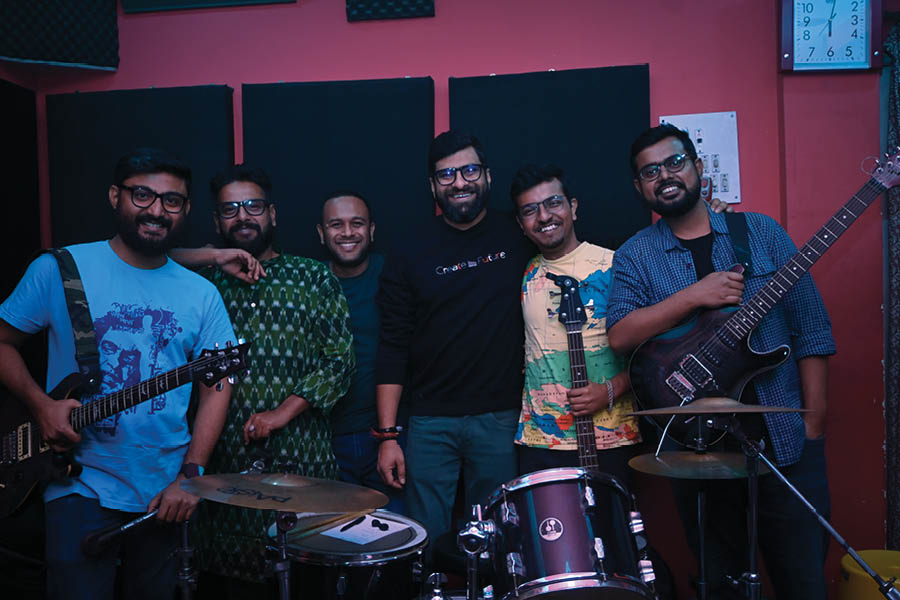From Aar Jani Na to Talobasha, it has been a long journey for the popular Bengali music band Chandrabindoo. The Bangla band has significantly contributed in changing the discourse of Bengali contemporary music — jeebanmukhi gaan — over the years.
Chandrabindoo recently turned 35, and celebrated the milestone by taking a trip down memory lane, releasing a vinyl record of a collection of their latest songs. To mark the occasion, My Kolkata had a candid chat with founding member Upal Sengupta about the band, their music, their upcoming album Talobasha, and more.
New year, new milestone, new album
The journey so far has brought accolades, but it has also brought opinions where fans have found the Chandrabindoo albums predictable. While it was a bit of a shocker for Upal, it also made the band introspect to understand the reason. This led to them taking a different route with their last album Noy in 2012. Their latest, upcoming album — the 10th one for the band — Talobasha, is a mixed bag of romance, satire, humour, and societal observation.
“The album has many small experiments. It is vibrant. The songs will perhaps bring joy to the listeners,” shared Upal with My Kolkata.
Music as a medium of expression
Lyrics are Chandrabindoo’s strong suit. From the metaphors of life to using humour as a medium of expression — the lyrics of the songs like Bandhu Tomay, Mone and Jodi Bolo Haan, to name a few, remain favourites of music aficionados. Satire and political references in songs like Geet Gobindho and Duniya Dot Com or the simple use of complex lines from the Baishab Padabali make the songs interesting.
Opining on the creative process of song writing, Upal said, “Our songs stem from the kind of music we like and the melodies that hold a special place in our hearts. Music for films is different. There are situations on which songs are based. But, while making songs for the band, what we like and the things we are reacting to come across.”
Chandrabindoo, with its independent music, also contributes to documenting and commenting on the discourse of the time, sometimes using their music as a commentary on society. “Our songs don’t only have satire, but also romance, and love for nature, among other things. I am a human being with different facets and thought processes, which come across through the songs,” said Upal.

Upal Sengupta and (right) Anindya Chatterjee on stage at a liv eperformance by Chandrabindoo My Kolkata archives
Striking a chord
Chandrabindoo’s band members inspire each other, said Upal. Through their journey, the camaraderie has allowed them to form a unit. “Since childhood, I liked listening to lokgeeti (folk music), Anindya liked the Beatles more. Surajit loved punk music and Blues. We have influenced each other. I also like punk music and the Beatles. We have been able to listen to a wide variety of music that has inspired us and led to experimenting a lot in terms of melody too,” shared the artiste.
The range of music by the band covers is diverse. From kirtan, rock-and-roll, blues to calypso — Chandrabindoo has created songs with many sounds. According to Upal, Chandrabindoo “has experimented a lot, and that makes us — us. We love doing this and we continue to do it.”
Love is eternal, so is music
The writing of the songs for the band usually begins with members Anindya Chatterjee and Chandril Bhattacharya. With commonplace words and relatable references like “loadshedding” or “ghum parani gaan”, their numbers make it easy to paint a picture with occurrences that are commonplace.
“There is a song called Adorer Nouka. It is a love song. People might think it is a song that describes Kolkata. However, it is more of a love ballad that speaks about unrequited love. The imagery used in the song depicts temporariness,” said Upal, describing one of the popular songs by the band.
Chandrabindoo is also known for their humour and quirk. The name of their albums also showcase a sense of wit. Be it Twaker Jatna Nin or Hulabila, the names make you smirk. “Twaker Jatna Nin, the song, was penned by Anindya Chatterjee, and the name of the album stemmed from that. Selecting a name or lyrics is finally done by either Chandril or Anindya, while we give suggestions. When it comes to arrangement, the final call is by Shibu or Surajit. Since I am a designer, album covers are made by me, while others give suggestions,” shared Upal.
The cover of their 10th album, Talobasha, was initially being designed by Upal, but since he has designed most of the previous covers, he asked Chandril to draw a few strokes to avoid a stylistic resemblance, and Chandril obliged. “Chandril’s artwork was different [than mine]. While I have designed the cover — deicing placements, calligraphy — as well as the back cover and the jacket fold, and the inside cover, the main art on the cover is by Chandril,” shared Upal, who is also known for his art.
Making memories
For the band and its members these three decades have not just been about making music, but also making memories, and Upal listed out a few of Chandrabindoo’s many memories from the last 35 years. “Our trip to America, attending a Harry Bellafonte concert in the States, visiting the Grand Canyon or the Niagara Falls, getting on the roller-coaster rides at the Universal Studios, there have been so many experiences. Visiting the caves in Rotorua in New Zealand full of fireflies too is a special memory.”
Taking a look back in time, Upal also reminisced about the making of the band’s first album Aar Jani Na, and a special memory associated with it. “When we decided to make the first album, the demo cassette had to be made to approach the album company. Thirty-five years back, technology was not as advanced, and adding a reverb was difficult. We had two cassette recorders. We would record in one recorder and play in the other, and I would sing atop the running track. But, two players would not play at the same time and our scales would also change. To add reverb, we would go inside the bathrooms to sing and record”.
Good music is eternal and remains in the hearts of the listeners
“When we started doing music, our music was different from what was happening 10 or 20 years before us. The songs that were composed by Salil Chowdhury are sung till date,” said the Upal, adding that change is the only constant. The evolution of music is something that Upal takes in his stride, observing how soundscapes have evolved from the kind of songs made by Chandrabindoo to the music made by new-age musicians like Debdeep Mukherjee, Prosen and others.
“Listeners will listen to good music. Do we not listen to Rabindrasangeet or songs by Salil Chowdhury? We do. Good music is eternal and remains in the hearts of the listeners. From our time, it is not just Chandrabindoo’s songs that people still listen to. Songs like Holud Pakhi by Cactus, Sujan by Paraspathar, or songs by Moheener Ghoraguli are still as popular,” further said Upal, stressing that the key to good music is honesty.
A musician can assess if a song can be popular, especially if it is on an ongoing trend. But whether it will be eternal cannot be assessed. But songs like Bhindeshi Tara by Chandrabindoo are one of the songs that will live on, said Upal Sengupta, signing off.


